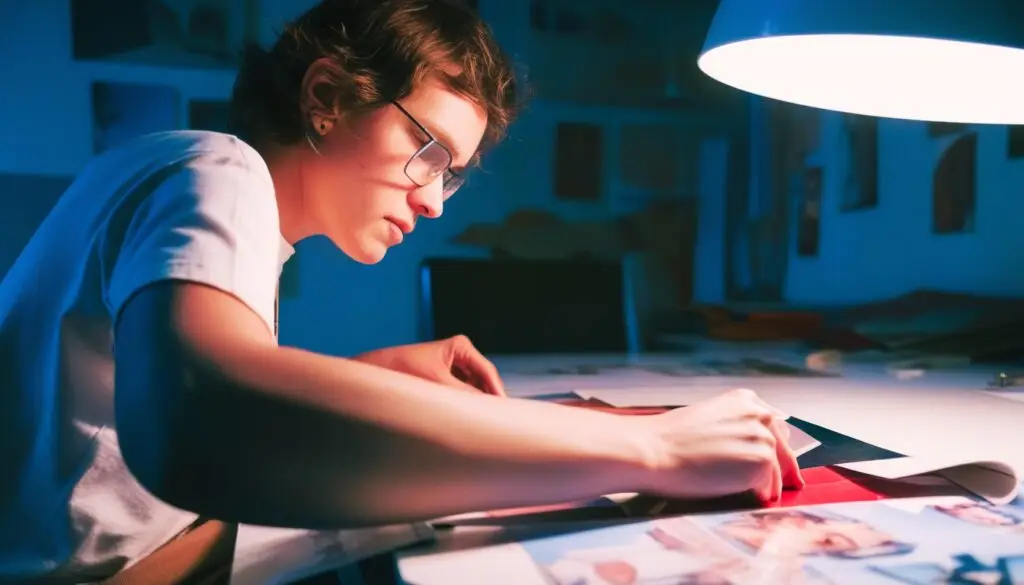TL;DR: Design education is falling behind. While tools like Canva and AI make design accessible, many new designers lack firm grounding in workflows, scalability, and system thinking. The missing “enterprise fundamentals” — structured file systems, non-destructive workflows, strategic thinking, and collaboration processes — are increasingly critical. Without them, organizations face rework, inefficiencies, and risk. Building those fundamentals into education and internal practice protects quality, future-proofs output, and sustains creative teams.
I began writing this series because it’s increasingly clear to me: something is missing in modern design education.
At first glance, it looks like nothing is wrong. More people than ever have access to powerful, intuitive tools that make design easier and faster. Platforms like Canva have democratized design, allowing non-designers to create professional-looking work with minimal effort. Companies are racing to adopt AI-powered tools at breakneck speed, hoping to gain an edge.
But beneath that accessibility, something fundamental has been lost.
Young designers are entering the workforce knowing the tools, but not the workflows. They can create finished output, but they haven’t been taught how to build scalable, adaptable systems. They understand how to make something look good today, but not how to ensure it works tomorrow. Few are taught to think strategically about their design—process or outcome.
And that gap is already causing problems:
- Designs break down when revisions are needed, or they must be adapted for multiple formats and devices.
- Collaboration falls apart because files aren’t structured properly, stored collectively, or made shareable in enterprise environments.
- Scalability is an afterthought, forcing costly rework.
The more I see this happening, the more I realize: this isn’t just an education problem—it’s a history problem. The same foundational skills that helped designers survive the last massive industry shift—when digital publishing upended everything—are disappearing. And I know this because I was there. I lived through that transition, and it was brutal.
Surviving the Digital Tsunami
The last time the industry shifted this dramatically, I was locked in a room with a Mac Plus, a cat, and a fridge full of beer. It was 1986. Mike Corcoran, who ran Shaw Copy Center after his family’s printing business, Dumont Printing, was split up, needed a new way forward. His part of the company had lost the typesetting machines, and he had to build those capabilities from scratch. He knew that desktop publishing was about to change everything. So, he bought one of the first Mac Pluses—no hard drive, just floppies—and put me in that den. “You have a month to learn everything about this machine,” he said. So, I did.
I had some computer experience from college, but nothing could prepare me for what came next. He paired me with a graphic designer, Suzanne Bertz, from the printing company, and we trained at a local typesetting company—learning to set type blind on a Compaq computer, using mnemonic code on 5-inch floppy disks. Her brilliant approach to teaching me type specifications? Driving around town and forcing me to spec type from billboards as they whizzed by. No time to second-guess. Just learn. That local typesetting company was run by an interesting, chain-smoking couple—wildly tech-savvy, operating in a chaotic, smoke-filled office. There was no GUI, so we had to calculate set points mathematically.
Then, when I mastered that, Mike sent me to Adobe to learn to program in PostScript. This was before PageMaker, Illustrator, or Photoshop even existed. That moment—the realization that design was about to become code-driven, scalable, and completely digital—was when I saw the future of design.
Tool Philosophy in the Early Vector Wars
I worked in both Adobe Illustrator 1.0 and Aldus FreeHand 1.0 when they first launched—yes, the very first versions. Illustrator had the edge in drawing tools and precision path control, especially with Bézier curves and PostScript integration. But FreeHand blew it away in one critical area: typography.
Even in version 1.0, FreeHand offered advanced type handling features that Illustrator wouldn’t touch for years: baseline shift, kerning pair control, paragraph-level formatting, and multiple master pages. It was also built for multi-page documents—something Illustrator didn’t attempt until much later. FreeHand sat in a hybrid space between Illustrator and PageMaker, offering designers a tool that respected both visual composition and typographic integrity. Its stroke model was also more intuitive, with line weights that behaved as expected.
What gets lost in modern design education is how philosophically different these tools were. Illustrator approached vector graphics like a fine-point pen: precision-first, one canvas, no frills. FreeHand felt more like a designer’s sketchpad: fluid, multi-page, with real typographic muscle. That difference shaped how we thought, worked, and communicated with clients.
The Seismic Shift: From Paste-Ups to Digital Workflows
In 1987, I was hired by Ziff-Davis Publishing in Foster City as a typesetter for A+ Magazine. My workstation? A “dumb terminal” hardwired to a typesetting machine at AGT—the production house responsible for generating film for press plates. Everything was still done by hand and by code. No WYSIWYG, no drag-and-drop. Something was brewing. MacUser Magazine had just hired art director Mike Yapp, who had been exposed to PageMaker 1.0 (then owned by Aldus).
In a conversation, I mentioned something radical: “You know, we can generate separations from PostScript files instead of manually building Rubylith overlays.” That one conversation set off a chain reaction.
At the time, it took teams of highly specialized people to produce a single printed page:
- Graphic artists manually spec’d and pasted type onto boards.
- Production teams built film overlays for images and Rubylith masks for color separations (CMYK).
- Revisions were expensive, time-consuming, and labor-intensive.
Suddenly, we could do color separations digitally—in place. It changed everything.
By 1989, I was sent to USF for a full day of psychological testing in preparation for a transfer to New York City. Ziff-Davis Publishing was about to digitally transform all of its magazines on the East Coast—and I was leading the charge. I had two years to convert every magazine from traditional typesetting to desktop publishing. The stakes? If a magazine missed an “on-sale” date, the entire staff could be fired.
I had to:
- Train entire teams to use digital tools before their jobs were eliminated.
- Build new production systems from scratch without jeopardizing deadlines.
- Navigate resistance, fear, and frustration—because careers were on the line.
I lived on the road between Silver Spring, MD, NYC HQ, Boston, and California. It was a trial by fire, and not everyone made it.
Restoring Enterprise Fundamentals in Design Education
This series will explore what’s missing in modern design education and why it still matters. Topics include:
- Why Non-Destructive Workflows Matter
- Beyond the Pixel: How Design Thinking Sets Professionals Apart
- The Real Cost of Poor Design Decisions
- Enterprise vs. Gig-Oriented Design: Understanding the Divide
- The Myth of the “Push-Button” Designer
- Rebuilding Design Education: What Needs to Change
I fought to understand and empower others through the last transition. And I’m watching history repeat itself. We can let foundational design knowledge disappear—or we can make sure the next generation is ready for what’s coming next.
A Note on Process & Collaboration
This blog series has been an iterative process, shaped through ongoing discussions with Frédo, using AI tools to sort timelines, refining ideas, and hone the prose to ensure clarity and impact—primarily with Chat-GPT (whom I’ve nicknamed Cha-cha) and Claude. I believe in transparency about my process. While the content is deeply personal and rooted in my own experiences, the act of writing—like design itself—benefits from collaboration, reflection, revision, and knowing my tools really well.
The Full Series
-
The Missing Link in Design Education: Why Enterprise Fundamentals Still Matter
BLOG SERIES | 1 OF 7
The Missing Link in Design Education: Why Enterprise Fundamentals Still Matter -
Why It All Matters: The Cost of Cutting Corners on Design Thinking & Training
BLOG SERIES | 2 OF 7
Why It All Matters: The Cost of Cutting Corners on Design Thinking & Training -
Future-Proofing Your Work: Why Non-Destructive Workflows Matter More Than Ever
BLOG SERIES | 3 OF 7
Future-Proofing Your Work: Why Non-Destructive Workflows Matter More Than Ever -
The Myth of the Push-Button Designer: Why Expertise Still Matters
BLOG SERIES | 4 OF 7
The Myth of the Push-Button Designer: Why Expertise Still Matters -
Beyond the Pixel: Why Design Thinking and Collaboration Are Essential
BLOG SERIES | 5 OF 7
Beyond the Pixel: Why Design Thinking and Collaboration Are Essential -
Sustaining Creativity: How to Hold Onto Joy in a Broken Industry
BLOG SERIES | 6 OF 7
Sustaining Creativity: How to Hold Onto Joy in a Broken Industry -
When the Tools Evolve Faster Than We Do: Teaching Design Without the Fear
BLOG SERIES | 7 OF 7
When the Tools Evolve Faster Than We Do: Teaching Design Without the Fear


